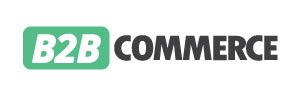As an eCommerce business owner in Canada, you know that having the right tools and systems in place is crucial to your success. One tool that can greatly benefit your business is Sage 50, a popular accounting software that offers a range of features to help you manage your finances, inventory, and more.
But how can you integrate Sage 50 with your eCommerce platform to get the most out of it? In this ultimate guide, we’ll walk you through the process of integrating Sage 50 with your eCommerce business, as well as the benefits of doing so and some best practices to follow.
Why integrate Sage 50 with your WooCommerce, Shopify or eCommerce platform?
There are several reasons why integrating Sage 50 with your eCommerce platform can be beneficial for your business. Here are just a few:
- Improved accuracy: When you integrate Sage 50 with your eCommerce platform, you can automate the process of transferring data between the two systems. This can help reduce the risk of errors and ensure that your financial data is accurate and up-to-date.
- Streamlined processes: By integrating Sage 50 with your eCommerce platform, you can eliminate the need to manually enter data into both systems, saving you time and effort.
- Better visibility: With the integration of Sage 50 and your eCommerce platform, you can get a comprehensive view of your business’s financial and sales data in one place. This can help you make more informed decisions about your business and identify opportunities for growth.
- Enhanced security: When you integrate Sage 50 with your eCommerce platform, you can add an extra layer of security to your financial data. This can help protect your business against potential fraud or data breaches.

Step-by-step guide to integrating Sage 50 with your eCommerce platform
Now that you understand the benefits of integrating Sage 50 with your eCommerce platform, let’s walk through the process of setting it up.
- Choose the right integration solution
There are several options available for integrating Sage 50 with your eCommerce platform. Some options include:
- Using a third-party integration platform such as Zapier or Webhooks
- Using an eCommerce plugin or extension specifically designed for Sage 50 integration
- Developing a custom integration using APIs (Application Programming Interfaces)
Which option is right for you will depend on your specific needs and resources. For example, using a third-party integration platform may be the quickest and easiest solution, but it may not offer as much customization as a custom integration using APIs.
- Set up your Sage 50 account
If you haven’t already, you’ll need to set up a Sage 50 account and install the software on your computer. This process will vary depending on the version of Sage 50 you’re using, so be sure to follow the instructions provided by the software.
- Connect your eCommerce platform to Sage 50
Once you’ve chosen your integration solution and set up your Sage 50 account, it’s time to connect your eCommerce platform to Sage 50. This process will also vary depending on the integration solution you’ve chosen.

For example, if you’re using a third-party integration platform, you’ll need to create a “zap” or “webhook” to connect the two systems. If you’re using an eCommerce plugin or extension, you’ll need to install the plugin or extension on your eCommerce platform and follow the instructions provided to set it up.
If you’re developing a custom integration using APIs, you’ll need to work with a developer to create the necessary code to connect the two systems.
Connect with Storehub.io, book a free consultation here.












